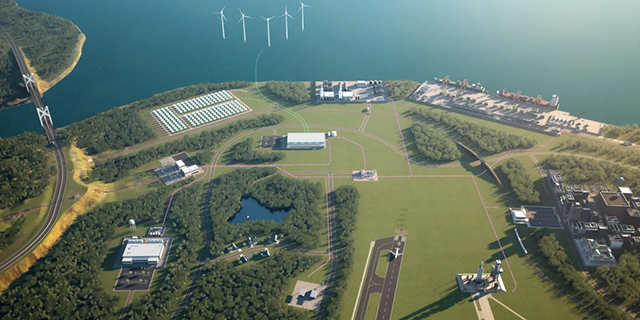‘Green hydrogen’ company looks to use Mississippi salt domes to become leader in burgeoning industry
Published 2:44 pm Thursday, April 25, 2024

- (Hy Stor Energy)
by Alex Rozier, Mississippi Today
April 24, 2024
The special geology of Mississippi is again giving the state a stab at playing a key role in the energy sector, this time for a burgeoning renewable power source called “green hydrogen.”
The company Hy Stor Energy, founded in 2019, is looking to take advantage of the state’s salt domes, which provide valuable underground pockets for gas storage. Hy Stor will store its hydrogen in different salt domes around the state, Chief Executive Officer Laura Luce said, but will primarily operate in Perry and Smith counties. The company is looking to start production by the end of 2026, she said.
“We’re really at the beginning of this green hydrogen revolution,” Luce said. “We really see the next three to 10 years where you’re going to have a lot of infrastructure be brought up and expanded and this industry stood up, and we’re confident that Mississippi is going to be the leaders in that industry.”
The technology behind renewable hydrogen has been around for about a century, Luce explained. The energy source materializes through a process called electrolysis, which uses electricity to split water into hydrogen and oxygen. But it wasn’t until the last few years that both the United States and the Europe began heavily investing in the technology. As part of the Bipartisan Infrastructure Law passed in 2021, the federal government appropriated $9.5 billion for clean hydrogen development.
In a roadmap the U.S. Department of Energy released in 2023, the agency explained that “clean hydrogen,” as it’s also referred to, can be a key tool in meeting the country’s goal of becoming carbon neutral by 2050. The plan says that clean hydrogen can reduce economy-wide emissions — targeting sectors like transportation, metal production, and fertilizer — by 10% over the next 30 years.

Last month, the DOE announced up to $500 million in funding for a “green steel” project, which would include producing iron in Perry County using clean hydrogen from Hy Stor. That facility, which would be operated by Swedish company SSAB, would then send the iron to Iowa to be made into steel. While the agency is still negotiating an exact award amount, the DOE projected that the project would create 540 permanent jobs as well as 6,000 construction jobs.
Hy Stor plans to use energy from other renewable sources, like solar and wind, to produce the green hydrogen, Luce said.
“The sun and the wind, even though they’re tremendous resources, they’re not available 24/7,” she said. “They’re available on an intermittent basis. So by taking those and converting them to hydrogen, now I have something that is dispatchable on minutes notice.”
Luce said the “epicenter” of Hy Stor will start out by a salt dome in Richton, near the proposed SSAB facility, with a pipeline connecting down to Port Bienville in southwest Mississippi.
An array of political leaders in the state have backed the project in letters to the DOE, including Gov. Tate Reeves, the State Oil and Gas Board, and the Mississippi Public Service Commission.

Even before Hy Stor, Mississippi’s geology has opened up the state to a number of energy sector investments. For instance, companies have long used the state’s salt domes to store natural gas. Mississippi has also recently positioned itself to become a hub for carbon storage, something that could be especially abundant in Gulf states because of the spaces between subsurface rocks.
The cost of the green hydrogen project will be steep, though. Luce said that the first phase of the project will cost over $10 billion, and that Hy Stor will look to enter into 10-, 20- or 30-year agreements with industrial customers to finance the operation. So far, she added, Hy Stor hasn’t received any federal or state government funding, but it will look for potential support from the DOE as well as renewable energy tax credits.
As far as who will buy the green hydrogen, Luce said Hy Stor’s initial customers in its first couple years of operations will include plastic, maritime and other transport companies, in addition to the proposed green steel project.
This article first appeared on Mississippi Today and is republished here under a Creative Commons license.![]()





